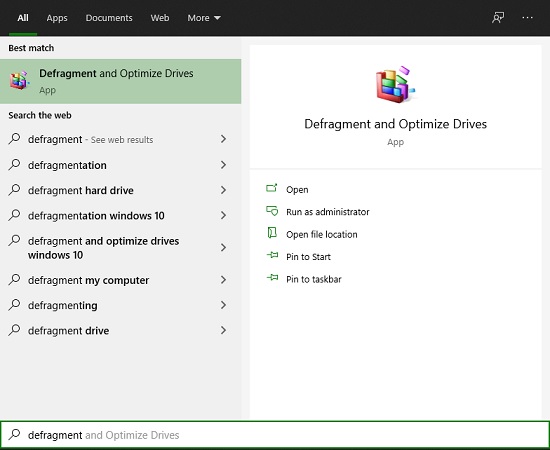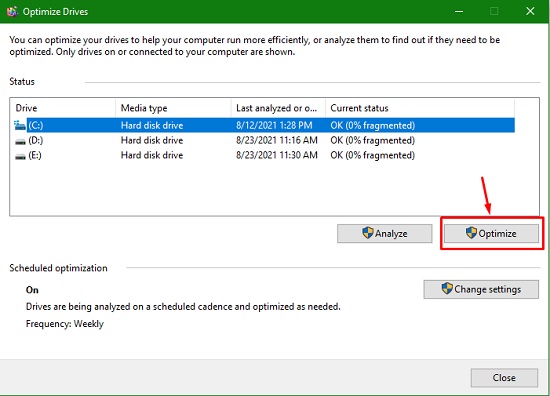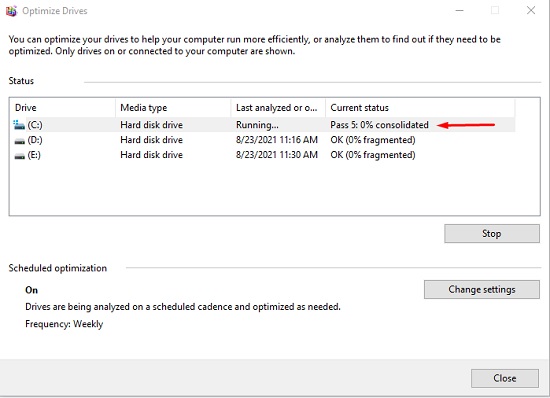How to defrag your computer in Windows 10? Have you ever heard this question before? Defragging, or defragmentation, refers to the process of reorganizing data on a hard drive in order to improve the overall performance of your computer. It’s a very useful and simple procedure, but if you are using Windows operating system, then you might not know how to defrag your computer. This article will guide you through all steps necessary for defragging your computer in Windows 10 Operating System.

After many months or years of using your computer, you surely have observed some noticeable changes in its performance. You have created, copied, or transferred files and have installed, repaired, manipulated, or uninstalled programs.
Doing any of these can somehow cause underlying problems in your hard disk, and the issues can often manifest in the gradually declining performance of your Windows system. This is where the concept of “defragmentation” comes in.
Defragmentation Explained
Fragments, or data blocks, of a whole file or sets of files are formed over time and can scatter in numerous locations of your drive. This process is called ‘fragmentation’. In the past versions of Windows, the ability of the hard disk to process search results is dependent on this.
The solution for this is called ‘defragmentation’ which attempts to move all those scattered data blocks close to each other in the physical drive, hoping that its transfer, writing, and reading speed can increase. However, it is not a one-time process and needs to be done on a regular basis depending on your frequency of usage.
On modern computers, the process doesn’t seem that necessary anymore. It’s because the latest versions of Windows will automatically defragment hard drives while computers using solid-state drives, or SSDs, don’t need defragmentation at all.
Nevertheless, it won’t hurt to defragment your drives from time to time since it provides more benefits to the system. In this article, we will be talking about how to defragment your hard disk while having a Windows 10 operating system.
Steps to Proper Defragmentation
- Press the ‘Windows’ key on your keyboard.
- On the search box found on the taskbar, type in ‘defragment’.
- From the search results, select the shortcut ‘Defragment and Optimize Your Drives’ in the Start menu.

- The ‘Optimize Drives’ window will appear, and the list will consist of all the drives in the system that can be optimized and defragmented. If one of the drives doesn’t appear, Windows 10 might have been set to only optimize drives with the ‘NTFS’ file system. Drives formatted in the ‘exFAT’ file system will not be displayed in the list.
- Granted that all of your drives appear on the list, select a drive you want to defragment then click on ‘Optimize’.
- For a hard disk drive, a defragmentation routine will be executed. For SSDs, a TRIM command will be executed which can potentially speed up the drive’s operation. However, it is not that necessary since Windows can do the procedure with most of the modern drives available.

- The process of optimization and defragmentation will begin if the selected disk needs it. On the ‘Current Status’ column, you will see the percentage of the progress of the defragmentation.

- If the process is done, the time displayed in the ‘Last Run’ column will update itself, and the column ‘Current Status’ will display something similar to the phrase ‘OK (0% fragmented)’. Note that the percentage of fragmentation will depend on the state of your hard drive.

- Now that the drive is successfully defragmented, you can restart your Windows and continue your computer tasks. You can also set a schedule for regular defragmentation. On the window ‘Optimize Drives’, at the bottom section ‘Scheduled Optimization’, then enable the ‘Turn on’ button.
Summary: Defrag computer in Windows 10
- To defrag your hard drive in Windows 10, you need to:
- Click the Start button.
- In the search box on the taskbar, type “defragment” and select Defragment and Optimize Drives.
- Under Drives, select the drive you want to optimize, usually your main hard drive C.
- Select Analyze.
- If you see a notification that optimization is recommended, select Optimize.
- You can close the Optimize Drives window once defragging is complete (it may take several minutes).
Conclusion
Defragmentation can contribute to speeding up your hard drive’s performance after many occasions of transferring files and installation of various programs. One thing you have to be careful of is not to interrupt the defragmentation process once it starts.